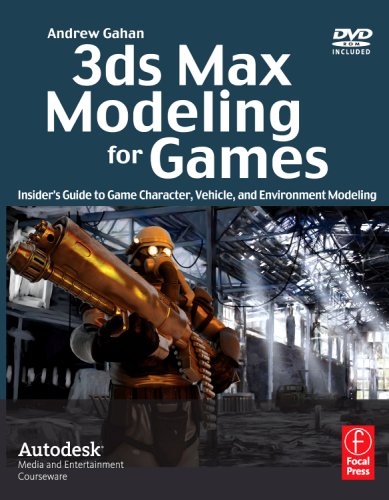So far, I have found another two books that can help me a lot in my dissertation. One is slightly similar to another, however contains useful information on other aspects that the other book didn't specify.
Gahan, A., 2009. 3ds Max Modelling for Games: Insider's guide to game character, Vehicle, and environmental Modelling. Burlington: Elsevier Inc.
This book contains a lot of techniques and ways of making different models in 3ds max ready to be imported into game environments which proves very useful when creating models for my own game and importing them. It shows simple methods for making low and high poly models, as well as new ways to texture them. It also gives a good understanding on normal mapping which will prove to be very useful as I learnt how to do this before.
McKinley, M., 2010. Maya Studio Projects: Game Environments and Props. Indianapolis: Wiley Publishing, Inc.
Although this book is about Maya, it is still very similar to 3ds Max, and so the techniques used in this book can still be applied in Max just as well. Again, in this book, there are additional methods of creating different aspects for modelling, as well as how to make models that have not yet been stated inside other books. Different environmental elements are shown in great detail as to how they can be made and textured to a high standard are shown throughout this book, which would greatly help me in my project.
Kahrs, J., Calahan, S., Carson, D., and Poster, S., eds. Pixel Cinematography:
A Lighting Approach for Computer Graphics. [pdf] Available through: http://education.siggraph.org/resources/cgsource/instructional-materials/archives/courses/s96-c30/s96_course30.pdf [Acessed 24 October 2011]
This is a PDF file all about lighting techniques that explains how and when what type of lighting method should be used depending on the current circumstances of the scene. It tells you how to get special effects and how to set the mood for your environment. It also explains how different different camera shots can add mood to the scene, when the correct light is also there to add depth and realism, and with these two methods working well together, you get the perfect realistic render.
De Jong, S., 2008. The Hows and Whys of Level Design: Second Edition. [pdf] Available at: http://www.horences.com
Another PDF file that contains more useful information about level design. However, this focuses on most areas and not just on modelling. A section in this PDF that I will pay most attention to will be the lighting, as he goes into great detail on how it should be done, and what do avoid with several examples of good and bad lighting. This should therefore illustrate more clearly what I should and shouldn't do when lighting my environment.
Greenway, T. et all., 2011. Photoshop for 3D Artists: Volume 1. Worcester: 3DTotal Publishing.
This book will be very useful on another key area I will be focusing on in my work, and that's the textures. My level needs to have textures that look realistic, clear, and add the depth to the scene. If they were bad and pixelated, the lighting would pick up on this and the overall effect of the level would not be good at all. This book also suggests methods on lighting with the textures, and how to bump/normal map them correctly.





No comments:
Post a Comment